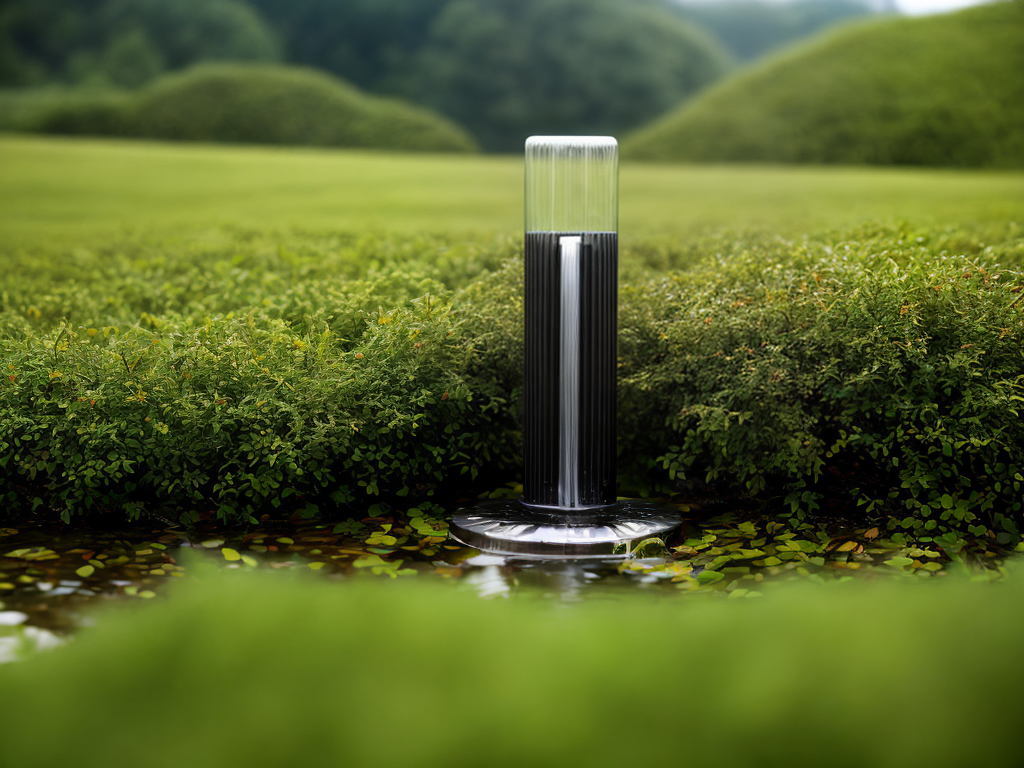
When it comes to discussing eco-friendly valve solutions, some may argue that the traditional valve systems are already sufficient and don’t require any changes. However, it is important to acknowledge the growing importance of sustainability in various industries. In this discussion, we will explore the rise of eco-friendly valve solutions and delve into the factors driving their adoption, the advantages they bring to industries, different types of eco-friendly valve technologies, successful case studies, challenges in transitioning, and future trends and innovations. By exploring these aspects, we will uncover the significance of eco-friendly valve solutions and how they contribute to a more sustainable future.
Importance of Eco-Friendly Valve Solutions
Eco-friendly valve solutions play a crucial role in ensuring sustainable and environmentally responsible industrial practices. As the global focus on environmental conservation intensifies, industries are increasingly adopting eco-friendly valve solutions to minimize their carbon footprint and contribute to a greener future. The benefits of these valves extend beyond their positive impact on the environment, as they also offer several advantages for businesses and the market as a whole.
One of the key benefits of eco-friendly valves is their ability to reduce energy consumption. By optimizing valve designs and employing innovative technologies, these valves can minimize energy losses and improve overall efficiency. This not only helps businesses save on energy costs but also contributes to a more sustainable energy usage, reducing the strain on natural resources.
In addition to energy savings, eco-friendly valves also contribute to the reduction of greenhouse gas emissions. By preventing leaks and improving control over fluid flow, these valves minimize the release of harmful gases into the atmosphere. This not only benefits the environment but also helps businesses comply with stricter environmental regulations and avoid fines or penalties.
The growing demand for eco-friendly valve solutions has fueled the growth of the market in recent years. As companies recognize the importance of sustainability and environmental responsibility, they are actively seeking out valve solutions that align with these principles. This has led to an expansion in the eco-friendly valve market, with manufacturers investing in research and development to meet the increasing demand.
Factors Driving the Adoption of Sustainable Valves
As I begin discussing the factors driving the adoption of sustainable valves, two key points come to mind. Firstly, the impact of environmental regulations is playing a significant role in pushing industries towards eco-friendly valve solutions. With stricter regulations in place, companies are seeking valves that align with sustainable practices. Secondly, the growing demand for green solutions from consumers and businesses alike is also driving the adoption of sustainable valves. As environmental awareness increases, there is a greater focus on implementing eco-friendly technologies, including valves, to reduce the overall carbon footprint.
Environmental Regulations Impact
Environmental regulations have significantly influenced the widespread adoption of sustainable valves in various industries. As governments around the world are becoming increasingly concerned about the environmental impact of industrial activities, they have implemented stricter regulations to reduce pollution and promote sustainability. This has led to a growing demand for eco-friendly valve solutions that can help companies comply with these regulations.
One of the main impacts of eco-friendly valve solutions on cost is that they can result in long-term savings for businesses. By using valves that are designed to be more energy-efficient and reduce waste, companies can lower their operating costs and improve their bottom line. Additionally, sustainable valves can also help companies avoid fines and penalties associated with non-compliance with environmental regulations.
However, implementing eco-friendly valve solutions can come with its own set of challenges. Companies may face initial costs associated with upgrading their equipment and training their staff on how to properly use and maintain the new valves. There may also be resistance to change from employees who are accustomed to traditional valve systems.
Demand for Green Solutions
The increasing demand for sustainable valves is driven by several factors. One of the primary drivers is the growing awareness and concern for the environment among consumers and industries. As the world becomes more conscious of the impact of human activities on the planet, there is a greater emphasis on adopting eco-friendly solutions in all sectors. This has led to a surge in the green valve market and the sustainable valve industry. Companies are now actively seeking valve solutions that have minimal environmental impact, such as those made from recycled materials or designed for energy efficiency. Additionally, government regulations and incentives promoting sustainability have further fueled the demand for green valves. As a result, manufacturers are investing in research and development to create innovative and environmentally friendly valve solutions to meet this increasing demand.
Advantages of Eco-Friendly Valves in Industry
Eco-friendly valves provide numerous advantages for industries, making them a valuable choice for sustainable and efficient operations. Here are some key benefits of using eco-friendly valves in industry:
-
Cost Effectiveness:
-
Eco-friendly valves can help industries reduce their operational costs significantly. By improving energy efficiency and reducing waste, these valves contribute to lower utility bills and maintenance expenses.
-
The use of eco-friendly valves can also lead to savings in terms of resource consumption. By optimizing processes and minimizing leaks and emissions, industries can reduce the amount of raw materials and energy required for their operations.
-
Market Potential:
-
With the increasing demand for environmentally friendly solutions, industries that adopt eco-friendly valves gain a competitive edge in the market. Customers, both individuals and businesses, are becoming more conscious of the environmental impact of the products and services they choose.
-
By incorporating eco-friendly valves into their operations, industries can demonstrate their commitment to sustainability and attract environmentally conscious customers. This can lead to increased market share and stronger brand reputation.
Types of Eco-Friendly Valve Technologies
When it comes to eco-friendly valve technologies, there are two main areas to consider: sustainable valve materials and energy-efficient valve designs. Sustainable valve materials are those that are made from renewable resources or recycled materials, reducing the environmental impact of their production. Energy-efficient valve designs, on the other hand, are designed to minimize energy consumption during operation, ensuring that valuable resources are not wasted. These two types of eco-friendly valve technologies work hand in hand to create a more sustainable and environmentally friendly solution for industries.
Sustainable Valve Materials
Sustainable valve materials offer an environmentally friendly solution for valve technologies. To provide a clearer picture of this, let’s explore two sub-categories: recyclable valve alternatives and sustainable valve manufacturing techniques.
Recyclable valve alternatives:
- Bio-based polymers: These materials are made from renewable resources such as plant-based feedstocks and offer a sustainable alternative to traditional valve materials.
- Composite materials: Combining different materials, such as recycled plastics and fibers, creates valves that are both durable and recyclable.
Sustainable valve manufacturing techniques:
- Additive manufacturing: Using 3D printing technology reduces material waste and energy consumption during the manufacturing process.
- Lean manufacturing: Implementing efficient production practices minimizes waste, reduces energy usage, and optimizes resources.
Energy-Efficient Valve Designs
Energy-efficient valve designs incorporate innovative technologies that reduce energy consumption and enhance overall sustainability. These designs utilize energy efficient valve materials and are manufactured using green manufacturing processes. By implementing these technologies, valve manufacturers are able to create products that not only minimize energy usage but also reduce the environmental impact of their production. Energy efficient valve materials, such as low-friction coatings and lightweight alloys, help to optimize the performance of valves while minimizing energy losses. Additionally, green manufacturing processes, such as using recycled materials and reducing waste, contribute to the overall energy efficiency and sustainability of valve designs. These advancements in energy-efficient valve technologies are crucial in promoting a more sustainable and environmentally friendly future.
Case Studies: Successful Implementation of Eco-Friendly Valves
Several successful case studies demonstrate the effective implementation of eco-friendly valves in various industries. These case studies highlight the positive impact of eco-friendly valves on both the environment and the bottom line of companies. Here are two examples:
-
Case Study 1: Energy Efficiency in the Oil and Gas Industry
-
A major oil and gas company implemented eco-friendly valves in their offshore platforms, resulting in significant energy savings. By replacing old, inefficient valves with new ones that had improved design and materials, the company was able to reduce energy consumption by 20%. This not only reduced their carbon footprint but also saved them millions of dollars in energy costs over time.
-
Furthermore, the eco-friendly valves required less maintenance and had a longer lifespan, leading to reduced downtime and increased productivity. This case study demonstrates how the implementation of eco-friendly valves can have a positive impact on both environmental sustainability and business profitability.
-
Case Study 2: Water Conservation in the Manufacturing Industry
-
A manufacturing company switched to eco-friendly valves in their water-intensive production processes. These valves were designed to minimize water waste by improving water flow control and reducing leaks. As a result, the company was able to reduce their water consumption by 30% without compromising production efficiency.
-
Additionally, the eco-friendly valves contributed to a cleaner and healthier working environment by preventing water leaks and minimizing the risk of water-related accidents. This case study showcases how eco-friendly valves can help companies achieve their sustainability goals while enhancing workplace safety.
These case studies demonstrate that the successful implementation of eco-friendly valves can yield both environmental and economic benefits across different industries. By embracing eco-friendly valve solutions, companies can reduce their environmental impact, save energy and resources, improve operational efficiency, and contribute to a more sustainable future.
Challenges and Obstacles in Transitioning to Eco-Friendly Valves
Transitioning to eco-friendly valves can present various challenges and obstacles for companies across different industries. As the eco-friendly valve market continues to grow, companies face the task of replacing their existing valves with more sustainable alternatives. One of the main challenges is the initial cost of transitioning. Eco-friendly valves often come at a higher price compared to traditional valves, which can be a deterrent for companies with tight budgets. However, it is important to consider the long-term benefits of eco-friendly valves, such as reduced energy consumption and lower environmental impact.
Another challenge is the compatibility of eco-friendly valves with existing infrastructure. Companies may need to make modifications to their systems in order to accommodate the new valves. This can involve additional costs and time-consuming installation processes. It is crucial for companies to carefully plan and assess the feasibility of transitioning to eco-friendly valves before making any investments.
Furthermore, companies may face resistance from employees or stakeholders who are resistant to change. It is important to communicate the benefits of eco-friendly valves and involve employees in the transition process to ensure their buy-in and cooperation.
Additionally, companies need to consider the availability and accessibility of eco-friendly valve suppliers. The demand for these valves is growing, but the market may not yet be fully developed in certain regions or industries. This can pose a challenge in finding reliable suppliers and obtaining the necessary quantity and quality of valves.
Future Trends and Innovations in Eco-Friendly Valve Solutions
As the demand for sustainable solutions continues to rise, the valve industry is witnessing an emergence of innovative and forward-thinking approaches to eco-friendly valve solutions. Manufacturers are investing in research and development to create future technologies and innovative designs that not only meet environmental standards but also improve efficiency and performance. Here are some of the trends and innovations shaping the future of eco-friendly valve solutions:
-
Smart Valve Technology: The integration of smart technology into valves allows for real-time monitoring and control, optimizing their performance and reducing waste. These smart valves can automatically adjust flow rates based on demand, resulting in significant energy savings and reduced carbon emissions.
-
Material Innovations: Companies are exploring alternative materials that are more environmentally friendly, such as bio-based polymers and recycled materials. These materials not only have a lower carbon footprint but also offer comparable strength and durability to traditional materials, ensuring the valves maintain their integrity while reducing their environmental impact.
-
Energy Harvesting: Future valve solutions may incorporate energy harvesting technologies, such as piezoelectric or thermoelectric systems, to generate electricity from the flow or temperature differentials. This renewable energy can then be used to power the valve’s control systems, eliminating the need for external power sources and reducing reliance on fossil fuels.
-
Modularity and Scalability: Valve designs that emphasize modularity and scalability allow for easier maintenance and upgrades. By separating different components, manufacturers can replace or upgrade individual parts instead of the entire valve, reducing waste and extending the lifespan of the product.
-
Lifecycle Analysis: Manufacturers are increasingly conducting lifecycle analysis to evaluate the environmental impact of their valve solutions. This holistic approach considers factors such as material sourcing, manufacturing processes, transportation, and end-of-life disposal, enabling companies to identify areas for improvement and make more informed decisions that prioritize sustainability.


